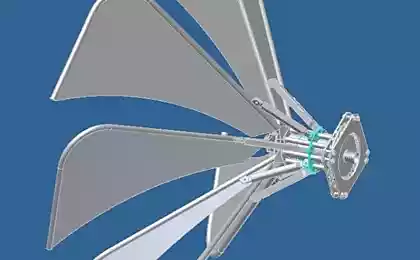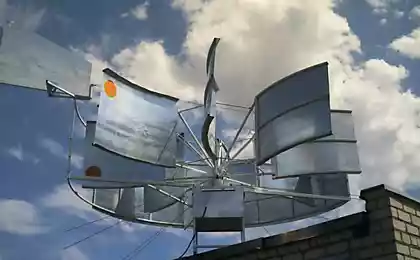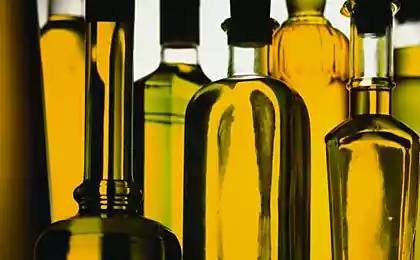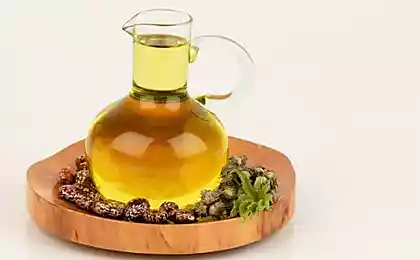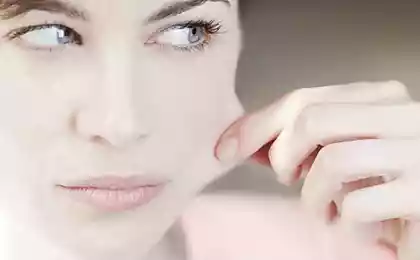423
Biodegradable blades of wind turbines
Wind energy is probably the future of alternative energy, but there is still room for improvement. The Achilles heel of this fast growing industry — the physical components of wind turbines, which are made from petroleum resins and end up in landfills.
The more wind, the more thrown used blades the size of a football field. To put an end to this extravagance, the national Science Foundation has singled out UMass Lowell grant in the amount of $1 900 000 for the solution of gigantic problems of wind energy by creating biodegradable blades.

Professor Christopher Niatrec of the Wind energy Research Group, UMass Lowell will direct the efforts of staff to develop these blades in the future. For the construction of new wind turbines they plan to use "polymers bio-based", an example of which is vegetable oil.
"In addition, at the moment we are considering the possibility of replacing petroleum resins stable. We aim to find new material, which has the same properties as currently used."
One of the difficulties is that it is necessary to check whether or not these eco-friendly blades to withstand severe weather conditions and have competitive prices. Niatrec added: "the Challenge is that they should cost either the same or less. If they are more expensive, the question arises: whether they are so high value that people preferred them? We must ensure economic efficiency of the whole that develop. There are many complications. This is the problem to solve is not easy."
Creating biodegradable blades certainly reasonable, given how quickly growing wind power industry.

The United States aims by 2030 to cover 20% of electricity demand through wind energy. 14 States have wind energy projects, 6 of them already receive from wind energy more than 10% of the power needed. Thanks to this, today carbon dioxide emissions by almost 79 000 000 tons less, and provided more than 75,000 jobs.
Currently, the United States has enough wind turbines to provide electricity to 12 million homes and this number continues to grow, and by 2030, it is estimated that Niatrec annually in the United States, will throw more than 34 000 of the blades.
Given that the blades end up either burned or are in landfills, it does not honor "ecologically friendly" wind energy. The use of biodegradable blades will make the industry more "green" by reducing waste.
The wind generators you can buy from us.
Source: /users/104
The more wind, the more thrown used blades the size of a football field. To put an end to this extravagance, the national Science Foundation has singled out UMass Lowell grant in the amount of $1 900 000 for the solution of gigantic problems of wind energy by creating biodegradable blades.

Professor Christopher Niatrec of the Wind energy Research Group, UMass Lowell will direct the efforts of staff to develop these blades in the future. For the construction of new wind turbines they plan to use "polymers bio-based", an example of which is vegetable oil.
"In addition, at the moment we are considering the possibility of replacing petroleum resins stable. We aim to find new material, which has the same properties as currently used."
One of the difficulties is that it is necessary to check whether or not these eco-friendly blades to withstand severe weather conditions and have competitive prices. Niatrec added: "the Challenge is that they should cost either the same or less. If they are more expensive, the question arises: whether they are so high value that people preferred them? We must ensure economic efficiency of the whole that develop. There are many complications. This is the problem to solve is not easy."
Creating biodegradable blades certainly reasonable, given how quickly growing wind power industry.

The United States aims by 2030 to cover 20% of electricity demand through wind energy. 14 States have wind energy projects, 6 of them already receive from wind energy more than 10% of the power needed. Thanks to this, today carbon dioxide emissions by almost 79 000 000 tons less, and provided more than 75,000 jobs.
Currently, the United States has enough wind turbines to provide electricity to 12 million homes and this number continues to grow, and by 2030, it is estimated that Niatrec annually in the United States, will throw more than 34 000 of the blades.
Given that the blades end up either burned or are in landfills, it does not honor "ecologically friendly" wind energy. The use of biodegradable blades will make the industry more "green" by reducing waste.
The wind generators you can buy from us.
Source: /users/104
